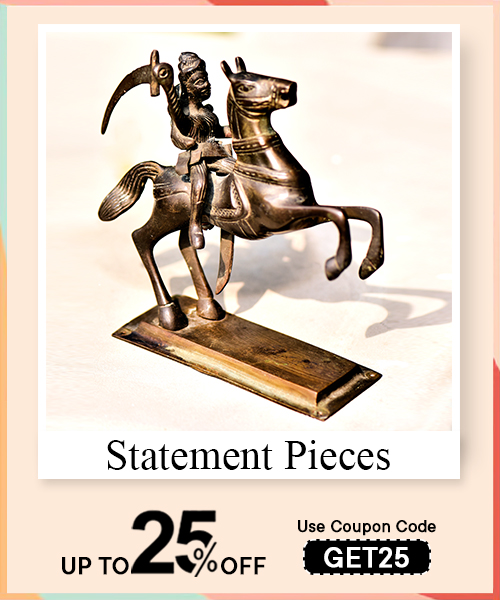In ancient times, when there were no telephones or emails, kings and queens passed their messages over town in the form of silk scrolls. And to authenticate the message, they would put a seal or stamp on the fabric. Over time, as technology boomed, seals and stamps were abandoned. However, not completely. We can say that their use shifted but not stopped altogether. The same technology that was earlier used in stately stamps, royal seals, and clay inscription tablets; is nowadays used in designing fabrics and textiles. The method is known as block printing.
What is Block Printing?
If you are a woman, you might have noticed golden paisleys or florals or scroll prints on silk saris. If you are a male, take a look at your patterned tie, and you’ll see. If you are a student, you must have painted lots of papers and hankies with lady finger discs, potatoes, and onions, right? So, we all have already come across block printing in some or the other way. Originated in China, block printing is a technique through which patterns, images or text can be printed on paper or fabric.

Mainly the technique is carried out by hand through wooden blocks immersed in dye. Although considered a painstaking process involving the intricate carving on the wooden blocks, however, with the advancement of technology, these wooden printing blocks are now readily available through various online shopping portals.
If you too wish to lay your hands on this off-the-rack printing style, the following are some types of hand block printing that you can try.
1. Direct Printing
Prevalent mostly as Sanganer and Bagru, the two towns of Rajasthan, this form of distribution is perhaps the easiest one. The first step in direct printing requires you to bleach the fabric on which you want to create the designs. Next follows the death of the material till a pale background is achieved.
Following this, straighten out the cloth on a printing board and fasten it using pins from all four sides. All four sides because it’s rigid and doesn’t curl up while creating the designs. Next, comes the integral part. Take out some handmade printing blocks, dip them in liquid color and then press onto the cloth to attain beautiful patterns. Make sure to apply equal pressure on all sides. Then, hang it down from a clothesline to dry. Once the dye has dried, wash the fabric, dry it in sun and iron it to a beautiful cloth.
2. Discharge Printing
This technique differs from Direct Technique in its process of dying first and removing the excess color from the areas where the patterns would be engraved. You need to wash off the color using a chemical, and then re-dye it with a color different from the rest of the fabric.
3. Resist Printing
While Discharge Printing is a technique involving a good deal of complications but it's not as arduous as Resist Printing. In this procedure, certain portions of the fabric are sealed with a concoction of resin and clay and then are immersed in the dye. This is followed by a thorough washing of the dyed fabric. Because of this, the color extends into the covered areas through cracks and crevices, thereby generating an undulating pattern on the fabric.
The entire process gets completed with subsequent block printings. The Batik Print on saris is usually crafted with the application of this Resist Printing technique. Batik is most popular in Asian countries including India, Malaysia, Singapore, and the Philippines.
4. Mordant Printing
Bitter Printing technique incorporates the application of ‘Mordant,' an inorganic oxide substance that is applied onto the fabric before coloring it. What happens through this implementation is that the color gets secured firmly to the material. The rest of the procedure is the same as the above three that is, producing motifs on the cloth with the printing blocks.
5. Rubbing
This is relatively a lesser used method now these days. In this method, the printing block is suspended on a flat surface with engraved side facing upwards. Then the cloth to be printed is tightened on the block and rubbed with a hard board from the top. The hard board can be a wood board, burnisher or a leather flap board.
Upon repetitive rubbing, the pattern on the block creates impression on the fabric. After a few turns of rubbing, you can dry the cloth. Since the minimum amount of liquid gets transferred in this method, the material tends to dry faster than other methods.
Wrap-up
With this conventional form of printing on the verge of ebbing away, the need of the hour is to preserve this ancient modus operandi by enormously promulgating it so that, more and more people can know and keep this practice alive for years to come. Besides, when printing blocks are available so easily these days, no better deal than this. This goes especially if you want to hand design your dresses with the convenience of your home!
Top 5 Block Printing Techniques for Designing Your Dresses













